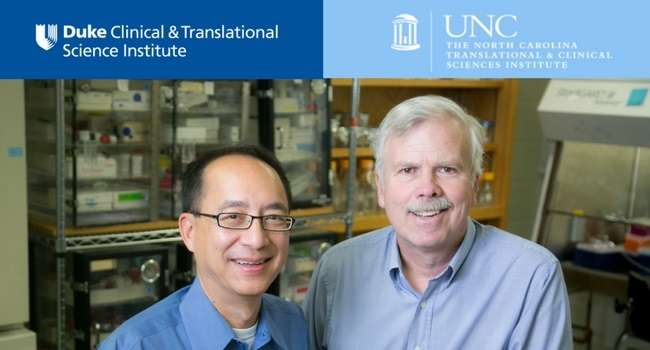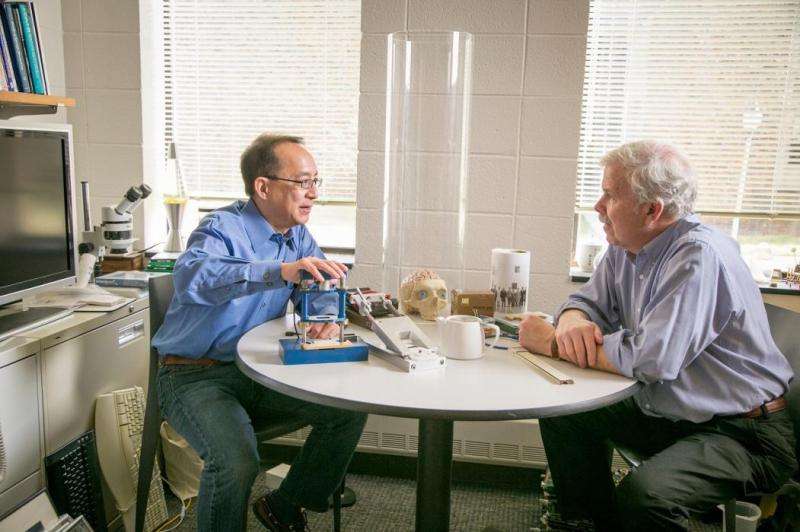Tackling human brain tumors by first growing them in a dish

For doctors and patients, the fight against cancer can be a lot like an exceedingly tricky version of the classic arcade game of whack-a-mole. You might beat back a tumor or part of a tumor, only to have another one pop up. To make matters worse, the "mallet" or treatment that successfully whacks the first tumor cells doesn't always work on those arising later. You might need a new strategy or even an entirely different drug. It's a tough game to win.
The reason it is often unsuccessful to apply a singular approach to beating cancer is that cancer cells evolve and change over time as cells divide and tumors expand. That ever-changing, increasingly heterogeneous nature of cancer has been a particular problem in effectively treating glioblastoma multiforme, a common and aggressive form of brain cancer. Even when treated with cancer-fighting drugs, only one out of three patients with glioblastoma multiforme are alive two years after their diagnosis.
"There might be a drug that works against the founding mutation in a tumor, but now this branch diverged and might then show resistance," explained Albert Baldwin, Professor and Associate Director of Basic Research at University of North Carolina at Chapel Hill's Lineberger Comprehensive Cancer Center.
Or, added Donald Lo, Director of the Center for Drug Discovery and Associate Professor of Neurobiology at Duke, "maybe the cancer goes into apparent remission, but, as Al was saying, there's this tendril—some branch that might go dormant during treatment—and when you go off the drug it has a chance to recur. It's common when cancer recurs that it's not exactly the same cancer. It's still a brain tumor, but it has a different molecular composition."
Brain Cancer in a Dish
With support from the Clinical and Translational Science Awards (CTSAs) at Duke and Carolina, Baldwin and Lo have teamed up to better understand the heterogeneity of brain cancer, using a new approach they've pioneered for growing and characterizing miniature human brain tumors in the lab. Ultimately, they hope to find new treatments or combinations of treatments to help more glioblastoma patients beat the odds.
As Lo and Baldwin explain, the standard way that scientists study brain cancers in the lab is to implant small pieces of a human tumor into the brains of laboratory mice. The method is difficult and slow, and it's hard to convert findings made in the mice into direct help for patients. That's in part because the mice in those studies have to be engineered to lack a functional immune system. It's the only way to get their bodies to accept a human tumor, which would otherwise be recognized as foreign and attacked.
To get around those limitations, Lo and Baldwin have proposed something that's both simpler and potentially more useful. They still isolate small glioblastoma "tumorspheres" from patients. But, instead of implanting them into a living mouse, they implant those tiny human tumors into slices of brain tissue grown in the lab. They've already shown that those tumorspheres settle in quickly to their new homes in the brain slices.
"We can put the tumors in culture and keep them going for days or weeks," Lo said. "Now we can watch the tumor grow in the normal brain environment, but because it's in dish we can also examine them carefully, both by digital imaging and by molecular analysis."

Sneak Peek
Their preliminary data show that the tumor fragments quickly begin to show different drug responses and different growth characteristics just like what is known to happen in cancer patients. The researchers say it's also clear that growing the tumors in brain slices is wholly different than growing them in a plastic petri dish. Baldwin describes the responses they see in the brain slices, as "richer and more diverse" than what happens in a plastic dish—presumably more like what happens in the brain of a patient.
Once the tumors have had a chance to become established and grow, the researchers will characterize these cancers-in-a-dish in terms of their essential characteristics and their response to candidate brain cancer drugs and drug combinations. They'll also analyze "tendrils" of the tumor that are resistant to particular drugs for underlying genetic differences that may predict tumor recurrence.
Ultimately, their new approach to studying cancer will be useful for translational research on cancer and drug development. But they say it might even be put to use clinically as a real-time diagnostic test, to aid doctors in making the best choice among treatment options for individual cancer patients.
"This is really in the realm of personalized medicine," Baldwin said. "Instead of doing this computationally, you could take a tumor right after an operation and put it into this assay platform to try to understand how that particular tumor could respond to available treatments. So far, it looks like we should be able to do that fast enough [to be clinically useful]—within weeks not months."
A Great Combination
Baldwin and Lo have known each for a long time. Their kids went to school together and they had crossed paths professionally over the years. They both serve as advisors for the Accelerate Brain Cancer Cure (ABC2) foundation, which is supporting their current CTSA-funded work with a matching grant of $50,000.
They like to joke that they make a great combination, like chocolate and peanut butter. Lo is an expert in developing novel methods and assays for studying neurodegenerative diseases, such as Huntington's disease, Alzheimer's disease, and stroke. Baldwin is an expert in cancer and the molecular signaling pathways that drive the disease.
Baldwin and Lo say it has become increasingly clear that understanding cancer requires insight into more than just cancer tissue. The host organ has a critical role to play, too. As a result, to really make progress in understanding brain cancer, it's essential to understand both cancer and the brain.
"Most scientists are trained in these narrow silos," Lo said. "It's rare for a scientist to be trained in the two or more fields you need to make progress. It's good that Al and I could combine our backgrounds to make a new type of cancer screening platform—to get a new look at how to develop cancer therapeutics and diagnostics. This CTSA grant mechanism is really perfect for that."

















